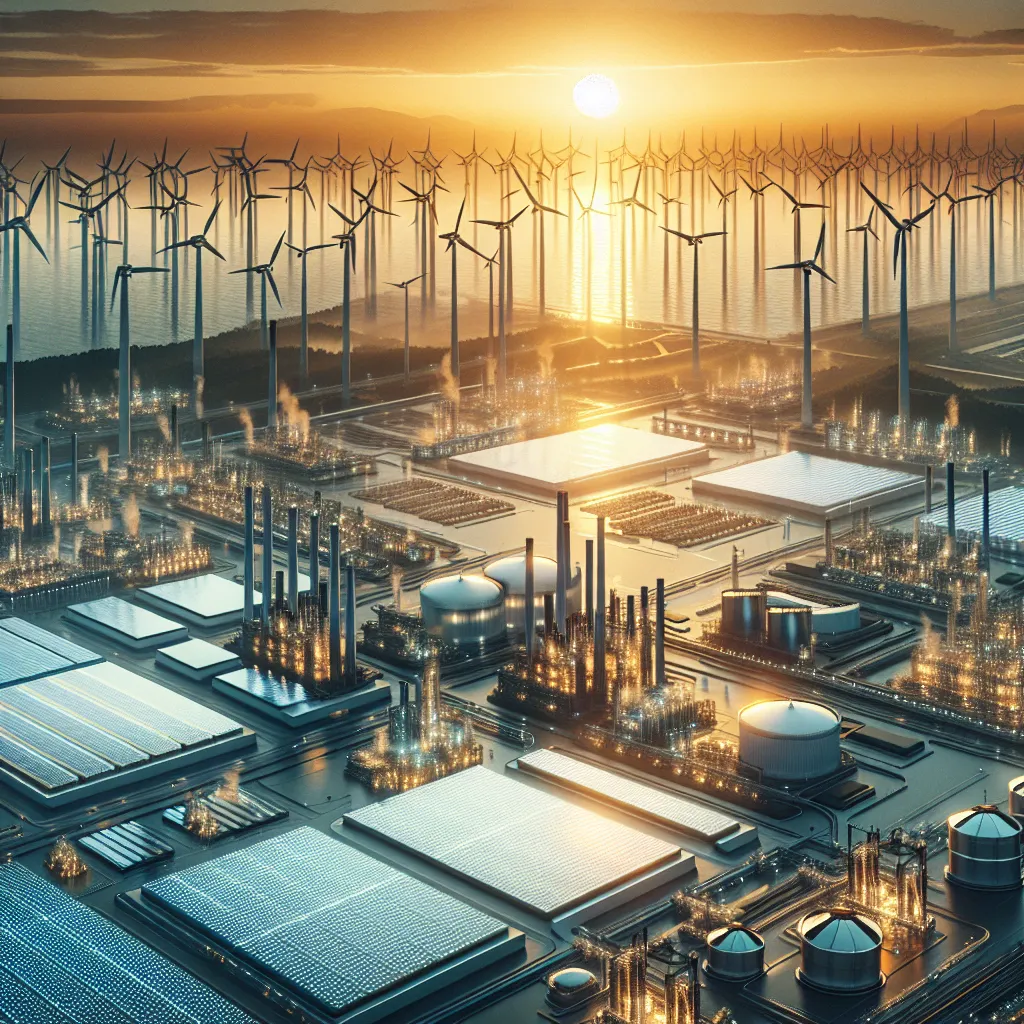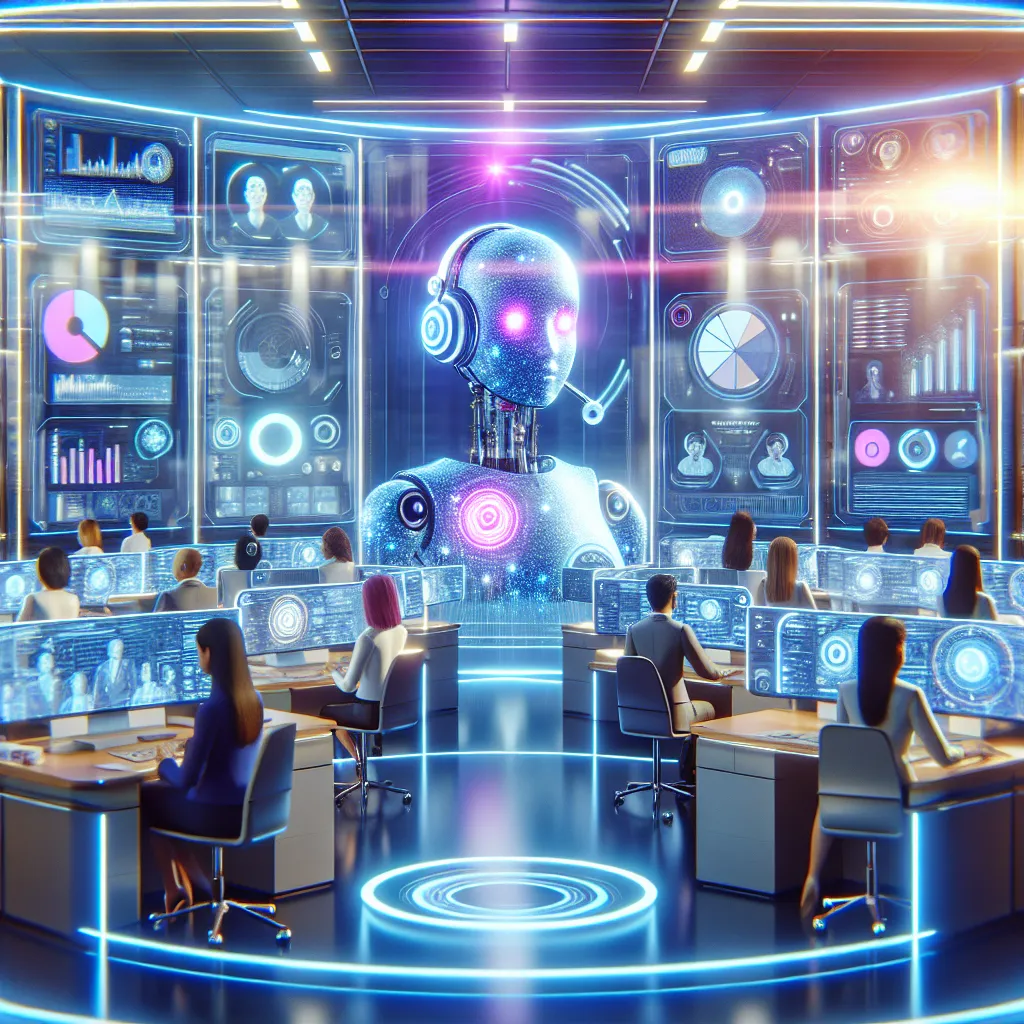Are you preparing for the IELTS Reading test and looking to improve your skills on topics related to renewable energy and industrial development? Look no further! This comprehensive practice test focuses on “The rise of renewable energy in the industrial sector,” providing you with authentic passages and questions to enhance your reading comprehension and test-taking strategies.
Table Of Contents
- Introduction
- Practice Test
- Passage 1 – Easy Text
- The Growing Importance of Renewable Energy in Industry
- Questions 1-7
- Questions 8-13
- Passage 2 – Medium Text
- The Economic and Environmental Impact of Industrial Renewable Energy Adoption
- Questions 14-19
- Questions 20-26
- Passage 3 – Hard Text
- The Paradigm Shift: Renewable Energy’s Transformative Impact on Industrial Processes and Global Markets
- Questions 27-31
- Questions 32-36
- Questions 37-40
 Renewable energy in industry
Renewable energy in industry
Introduction
The IELTS Reading test assesses your ability to understand and interpret complex texts on various subjects. In this practice test, we’ll explore the growing importance of renewable energy in the industrial sector, a topic that has gained significant attention in recent years due to its environmental and economic implications.
Practice Test
Passage 1 – Easy Text
The Growing Importance of Renewable Energy in Industry
Renewable energy has become increasingly important in the industrial sector over the past few decades. As concerns about climate change and environmental sustainability continue to grow, many industries are turning to renewable energy sources to power their operations. This shift is not only beneficial for the environment but also offers numerous economic advantages for businesses.
One of the primary drivers of this change is the declining cost of renewable energy technologies. Solar panels and wind turbines, for example, have become significantly cheaper to produce and install, making them more accessible to a wider range of industries. Additionally, governments around the world are offering incentives and subsidies to encourage the adoption of clean energy solutions.
The manufacturing sector has been particularly receptive to incorporating renewable energy into its processes. Many factories now use solar panels on their roofs to generate electricity, while others have invested in wind farms to power their operations. This transition not only reduces their carbon footprint but also provides a hedge against fluctuating energy prices.
Another area where renewable energy is making a significant impact is in the transportation industry. Electric vehicles powered by renewable sources are becoming increasingly common, and some companies are experimenting with hydrogen fuel cells as an alternative to traditional fossil fuels.
The agricultural sector is also embracing renewable energy solutions. Farmers are using solar-powered irrigation systems and biomass energy to reduce their reliance on conventional power sources. This not only lowers their operating costs but also helps to create a more sustainable food production system.
As technology continues to advance, the potential for renewable energy in the industrial sector is likely to grow even further. Energy storage solutions, such as advanced batteries, are improving rapidly, allowing industries to rely more heavily on intermittent renewable sources like solar and wind power.
In conclusion, the rise of renewable energy in the industrial sector represents a significant shift in how businesses approach their energy needs. This trend is expected to continue as companies recognize the environmental and economic benefits of transitioning to clean energy sources.
Questions 1-7
Do the following statements agree with the information given in the passage? Write
TRUE if the statement agrees with the information
FALSE if the statement contradicts the information
NOT GIVEN if there is no information on this
- Renewable energy has become more important in the industrial sector in recent years.
- The cost of renewable energy technologies has increased over time.
- The manufacturing sector has been slow to adopt renewable energy solutions.
- Electric vehicles are becoming more common in the transportation industry.
- The agricultural sector is using nuclear power to reduce reliance on conventional energy sources.
- Energy storage solutions are improving rapidly.
- All industries have fully transitioned to renewable energy sources.
Questions 8-13
Complete the sentences below. Choose NO MORE THAN TWO WORDS from the passage for each answer.
- Governments are offering __ and subsidies to encourage the adoption of clean energy solutions.
- Many factories use __ on their roofs to generate electricity.
- Some companies in the transportation industry are experimenting with __ as an alternative to fossil fuels.
- Farmers are using solar-powered __ systems to reduce their reliance on conventional power sources.
- The use of renewable energy in industry helps create a more __ food production system.
- The rise of renewable energy in the industrial sector represents a significant shift in how businesses approach their __.
Passage 2 – Medium Text
The Economic and Environmental Impact of Industrial Renewable Energy Adoption
The transition to renewable energy sources in the industrial sector is not merely a technological shift; it represents a fundamental change in the way businesses operate and interact with the environment. This transformation has far-reaching implications for both the economy and the ecosystem, creating a complex web of benefits and challenges that must be carefully navigated.
From an economic perspective, the adoption of renewable energy in industry has created a burgeoning market for clean energy technologies. This has led to the emergence of new industries and job opportunities in fields such as solar panel manufacturing, wind turbine installation, and energy efficiency consulting. According to the International Renewable Energy Agency (IRENA), the renewable energy sector employed 11.5 million people globally in 2019, a figure that is expected to grow substantially in the coming years.
The shift towards renewables has also sparked innovation in energy storage and distribution systems. As industries strive to overcome the intermittency issues associated with solar and wind power, investments in advanced battery technologies and smart grid systems have surged. This not only enhances the reliability of renewable energy but also creates additional economic opportunities in research and development.
However, the economic impact of this transition is not uniformly positive. Traditional fossil fuel industries have experienced significant disruption, leading to job losses and economic hardship in some regions heavily dependent on coal, oil, and natural gas production. This has necessitated the development of “just transition” policies to support affected communities and workers.
From an environmental standpoint, the benefits of industrial renewable energy adoption are substantial. The reduction in greenhouse gas emissions from industrial processes contributes significantly to global efforts to mitigate climate change. A study by the International Energy Agency (IEA) suggests that increased use of renewables in the industrial sector could reduce CO2 emissions by up to 20% by 2050, compared to a business-as-usual scenario.
Moreover, the shift to renewables has indirect environmental benefits. For instance, the reduced demand for fossil fuels lessens the environmental damage associated with extraction activities such as mining and drilling. It also decreases the risk of environmental disasters such as oil spills and coal ash leaks.
Nevertheless, the environmental impact of renewable energy is not entirely benign. The production of solar panels and wind turbines requires the extraction of rare earth metals, which can have significant environmental consequences if not managed properly. Additionally, large-scale wind and solar farms can impact local ecosystems and wildlife habitats.
The water-energy nexus is another crucial consideration in the industrial adoption of renewables. While some renewable technologies, such as wind and solar photovoltaic, require minimal water for operation, others, like concentrating solar power and some bioenergy systems, can be water-intensive. In water-stressed regions, this could lead to competition with other vital water uses, such as agriculture and domestic consumption.
Despite these challenges, the overall trajectory of renewable energy adoption in the industrial sector appears to be positive. Technological advancements are continually improving the efficiency and reducing the environmental footprint of renewable energy systems. For example, innovations in recycling techniques for solar panels and wind turbine blades are addressing end-of-life waste concerns.
Furthermore, the integration of artificial intelligence and machine learning in energy management systems is optimizing the use of renewable energy in industrial processes. These smart systems can predict energy demand, balance loads, and maximize the utilization of renewable sources, further enhancing their economic and environmental benefits.
In conclusion, the rise of renewable energy in the industrial sector represents a complex interplay of economic and environmental factors. While challenges remain, the potential benefits in terms of job creation, innovation, and environmental protection are substantial. As technology continues to evolve and policy frameworks adapt, the industrial sector’s transition to renewable energy is likely to play a crucial role in shaping a more sustainable and prosperous future.
Questions 14-19
Choose the correct letter, A, B, C, or D.
-
According to the passage, the adoption of renewable energy in industry has:
A) Only affected the technology sector
B) Created new job opportunities in clean energy fields
C) Decreased the overall number of jobs globally
D) Had no impact on the job market -
The intermittency issues associated with solar and wind power have led to:
A) A decrease in renewable energy investments
B) The abandonment of solar and wind projects
C) Increased investments in energy storage and distribution systems
D) A preference for fossil fuels over renewables -
The term “just transition” in the passage refers to:
A) The rapid shift from fossil fuels to renewables
B) Policies to support communities affected by the decline of fossil fuel industries
C) The equal distribution of renewable energy resources
D) The transition of all industries to renewable energy simultaneously -
According to the International Energy Agency, increased use of renewables in the industrial sector could:
A) Eliminate all CO2 emissions by 2050
B) Reduce CO2 emissions by up to 20% by 2050
C) Have no significant impact on CO2 emissions
D) Increase CO2 emissions due to manufacturing processes -
The production of solar panels and wind turbines:
A) Has no environmental impact
B) Only affects local ecosystems
C) Requires the extraction of rare earth metals
D) Uses more water than fossil fuel extraction -
The integration of artificial intelligence and machine learning in energy management systems:
A) Has no effect on renewable energy use
B) Decreases the efficiency of renewable energy systems
C) Optimizes the use of renewable energy in industrial processes
D) Is not mentioned in the passage
Questions 20-26
Complete the summary below. Choose NO MORE THAN TWO WORDS from the passage for each answer.
The adoption of renewable energy in the industrial sector has significant economic and environmental implications. Economically, it has created new industries and job opportunities, particularly in (20) __ and energy efficiency consulting. However, it has also caused disruption in (21) __ industries, leading to job losses in some regions.
Environmentally, the benefits include reduced (22) __ from industrial processes, which contributes to climate change mitigation. The decreased demand for fossil fuels also reduces environmental damage associated with (23) __ activities. However, the production of renewable energy equipment can have environmental consequences, particularly in the extraction of (24) __.
The water-energy nexus is an important consideration, as some renewable technologies can be (25) __. Despite challenges, technological advancements are improving efficiency and reducing the environmental impact of renewable energy systems. The integration of (26) __ in energy management systems is further optimizing the use of renewable energy in industrial processes.
Passage 3 – Hard Text
The Paradigm Shift: Renewable Energy’s Transformative Impact on Industrial Processes and Global Markets
The integration of renewable energy into industrial processes represents a paradigm shift that is reshaping not only the energy landscape but also global markets and industrial practices. This transformation is characterized by complex interactions between technological innovation, economic forces, and environmental imperatives, creating a new industrial ecology that is fundamentally altering the way goods are produced and resources are utilized.
At the forefront of this change is the concept of circular economy, which is gaining traction as industries seek to maximize resource efficiency and minimize waste. Renewable energy plays a pivotal role in this model by providing the clean power needed to sustain recycling and remanufacturing processes. For instance, the steel industry, traditionally one of the largest industrial emitters of CO2, is experimenting with hydrogen produced from renewable sources as a reducing agent in steel production, potentially revolutionizing a centuries-old manufacturing process.
This shift towards renewables is also catalyzing innovation in industrial symbiosis, where waste or byproducts from one industrial process are used as raw materials for another. Solar-powered desalination plants, for example, are being integrated with salt-tolerant agriculture, creating a symbiotic relationship that addresses both energy and food security concerns in arid regions.
The adoption of renewable energy in industry is not merely a matter of substituting one power source for another; it is driving a comprehensive reevaluation of industrial processes. The intermittent nature of many renewable sources has spurred the development of more flexible and adaptive manufacturing systems. Demand response strategies, once limited to the power sector, are now being applied in industrial settings, allowing factories to adjust their production schedules to align with periods of peak renewable energy generation.
This flexibility is further enhanced by the emergence of smart manufacturing technologies. The integration of Internet of Things (IoT) devices, big data analytics, and artificial intelligence is enabling real-time optimization of energy use in industrial processes. These systems can predict energy availability from renewable sources and automatically adjust production parameters to maximize efficiency and minimize waste.
The global nature of industrial supply chains is both a challenge and an opportunity in the context of renewable energy adoption. On one hand, the variability in renewable resources across different geographical locations complicates the standardization of industrial processes. On the other hand, it opens up possibilities for energy arbitrage, where energy-intensive processes can be strategically relocated to areas with abundant renewable resources.
This geographical dimension of renewable energy is reshaping global trade patterns and industrial competitiveness. Countries with rich renewable resources are emerging as new industrial powerhouses, challenging traditional manufacturing hubs. For instance, Morocco’s vast solar resources are attracting energy-intensive industries, potentially transforming it into a major industrial player in the Mediterranean region.
The financial sector is also playing a crucial role in this industrial transformation. The development of green bonds and other innovative financial instruments is channeling capital towards renewable energy projects in the industrial sector. Moreover, the increasing emphasis on Environmental, Social, and Governance (ESG) criteria in investment decisions is pressuring industries to accelerate their transition to renewable energy.
However, this transition is not without its challenges. The intermittency of renewable sources poses significant technical challenges for industries that require constant, high-quality power. Energy storage technologies, while rapidly advancing, are still not sufficiently developed to fully mitigate this issue in all industrial applications. This has led to the emergence of hybrid systems that combine renewables with other energy sources to ensure reliability.
The transition to renewable energy in industry also raises important questions about energy equity. As industries in developed countries increasingly shift to renewables, there is a risk that more polluting industries may be offshored to countries with less stringent environmental regulations, potentially exacerbating global inequalities.
Furthermore, the rapid pace of change in renewable technologies creates the risk of stranded assets in the industrial sector. Investments in renewable energy infrastructure may become obsolete faster than traditional energy assets, requiring careful long-term planning and adaptive strategies.
Despite these challenges, the momentum towards renewable energy in the industrial sector appears irreversible. Technological advances, particularly in the field of green hydrogen, promise to overcome many of the current limitations. Green hydrogen, produced through electrolysis powered by renewable energy, has the potential to decarbonize even the most energy-intensive industrial processes, including steel production and chemical manufacturing.
The implications of this industrial transition extend far beyond the realm of energy. It is reshaping urban planning, as the decentralized nature of many renewable energy sources allows for more distributed industrial development. This could lead to a reimagining of the relationship between industrial zones and residential areas, potentially reversing decades of urban-rural divide.
In conclusion, the rise of renewable energy in the industrial sector is not just an energy transition; it is a fundamental reimagining of industrial processes, global trade patterns, and the relationship between industry and the environment. As this transformation unfolds, it promises to redefine the very nature of industrial production, creating new challenges and opportunities that will shape the global economy for decades to come.
Questions 27-31
Choose the correct letter, A, B, C, or D.
-
According to the passage, the concept of circular economy in industry is:
A) Unrelated to renewable energy adoption
B) Focused solely on recycling
C) Aimed at maximizing resource efficiency and minimizing waste
D) Only applicable to the steel industry -
The adoption of renewable energy in industry is driving:
A) A simple substitution of power sources
B) A comprehensive reevaluation of industrial processes
C) The abandonment of traditional manufacturing methods
D) Increased reliance on fossil fuels -
Smart manufacturing technologies in the context of renewable energy:
A) Are ineffective in industrial settings
B) Only focus on energy production
C) Enable real-time optimization of energy use in industrial processes
D) Decrease overall production efficiency -
The geographical dimension of renewable energy is:
A) Irrelevant to industrial competitiveness
B) Only affecting developed countries
C) Reshaping global trade patterns and industrial competitiveness
D) Limiting industrial growth to specific regions -
The development of green bonds is:
A) Hindering the adoption of renewable energy in industry
B) Only benefiting the financial sector
C) Channeling capital towards renewable energy projects in the industrial sector
D) Not mentioned in the passage
Questions 32-36
Complete the sentences below. Choose NO MORE THAN THREE WORDS from the passage for each answer.
-
The steel industry is experimenting with __ produced from renewable sources as a reducing agent in steel production.
-
The intermittent nature of many renewable sources has led to the development of more __ manufacturing systems.
-
Countries with rich renewable resources are emerging as new __, challenging traditional manufacturing hubs.
-
The rapid pace of change in renewable technologies creates the risk of __ in the industrial sector.
-
Green hydrogen, produced through electrolysis powered by renewable energy, has the potential to __ even the most energy-intensive industrial processes.
Questions 37-40
Do the following statements agree with the claims of the writer in the passage? Write
YES if the statement agrees with the claims of the writer
NO if the statement contradicts the claims of the writer
NOT GIVEN if it is impossible to say what the writer thinks about this


